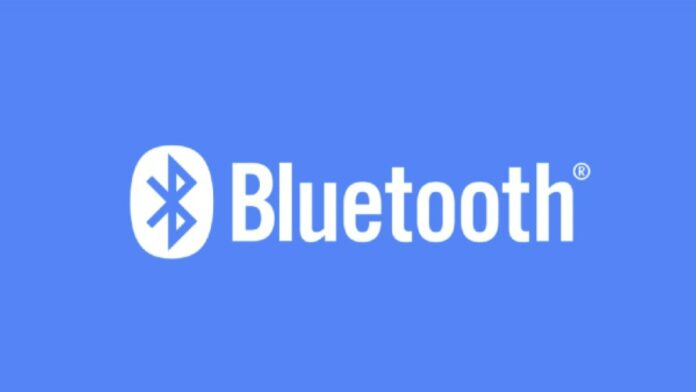Introduction:
Bluetooth technology has evolved significantly over the years, with each new version bringing improvements in terms of performance, range, speed, and features. The latest iterations, Bluetooth 5.3, Bluetooth 5.2, Bluetooth 5.1, and Bluetooth 5.0, have introduced various advancements that enhance the overall user experience. In this article, we will compare these different Bluetooth versions, highlighting their differences and helping you understand which one might be the best fit for your specific needs.



Bluetooth 5.0:
Bluetooth 5.0, released in 2016, was a major upgrade over its predecessor, Bluetooth 4.2. One of the key improvements was its increased data transfer speed, which was up to 2 Mbps, making it ideal for applications requiring high data throughput, such as audio streaming and file transfers. Bluetooth 5.0 also introduced the ability to transmit data over longer distances, with a range of up to 240 meters in ideal conditions. Additionally, it brought enhancements to the Bluetooth Low Energy (BLE) protocol, making it more energy-efficient and suitable for devices like fitness trackers and smartwatches.
Bluetooth 5.1:
Released in 2019, Bluetooth 5.1 brought several location-based features, including direction finding and angle of arrival (AoA) and angle of departure (AoD) capabilities. These features enable more accurate indoor positioning and location-based services, making it useful for applications like asset tracking, indoor navigation, and proximity-based marketing. Bluetooth 5.1 also improved the performance of existing Bluetooth protocols and offered better coexistence with other wireless technologies.
Bluetooth 5.2:
Bluetooth 5.2, released in 2020, represented a significant advancement in the audio capabilities of Bluetooth devices. One of the standout features of Bluetooth 5.2 was the introduction of LE Audio, a major enhancement to the audio experience for Bluetooth users. LE Audio brought support for the Low Complexity Communications Codec (LC3), a high-quality audio codec that significantly improved sound quality while reducing the amount of data transmitted. LC3 offers more efficient audio compression, enabling devices to deliver impressive audio performance even at lower data rates.
Another notable addition to Bluetooth 5.2 was Audio Sharing. This feature allows multiple users to enjoy audio content from a single Bluetooth source simultaneously. For instance, with Audio Sharing, friends or family members can listen to the same music or watch a movie together.
Bluetooth 5.3:
Bluetooth 5.3 is the most recent version of the Bluetooth standard, released after Bluetooth 5.2. This latest iteration builds upon the enhancements introduced in previous versions while introducing new features to improve the overall performance and capabilities of Bluetooth-enabled devices.
One of the significant additions in Bluetooth 5.3 is the Bluetooth Mesh Low Power (MLP) feature. This feature is designed to optimize the power consumption of Bluetooth devices operating within large-scale mesh networks. Mesh networks consist of numerous interconnected devices, and they are commonly used in applications like smart lighting systems and smart home automation, where multiple devices need to communicate with each other over extended areas. The MLP feature ensures that these devices can efficiently exchange data while consuming minimal power, prolonging battery life and enhancing the overall performance of the mesh network.
One of the notable advancements in LE Audio with Bluetooth 5.3 is its ability to support multi-stream audio sharing. This means that multiple users can simultaneously share audio from a single Bluetooth source. For example, friends or family members can listen to the same audio content from a single smartphone or tablet without the need for separate Bluetooth connections. This feature enhances the social aspect of audio sharing and provides greater convenience for group listening experiences.
Comparison:
Data Transfer Speed:
– Bluetooth 5.0:
Introduced in 2016, Bluetooth 5.0 offered a significant boost in data transfer speed, with a maximum throughput of up to 2 Mbps (megabits per second). This improvement allowed for faster file transfers and high-quality audio streaming.
– Bluetooth 5.1:
Released in 2019, Bluetooth 5.1 maintained the same data transfer speed as Bluetooth 5.0, ensuring that the enhanced location-based services did not compromise data transmission capabilities.
– Bluetooth 5.2:
In 2020, Bluetooth 5.2 maintained the data transfer speed of its predecessors, focusing instead on audio enhancements with the introduction of LE Audio and Audio Sharing features.
– Bluetooth 5.3:
The latest version, Bluetooth 5.3, does not specify a fixed maximum data rate. Instead, it concentrates on other improvements, particularly in mesh networking.
Range:
– Bluetooth 5.0:
One of the significant improvements in Bluetooth 5.0 was its increased range, capable of reaching up to 240 meters in ideal conditions. This extended range made Bluetooth 5.0 suitable for a wide range of applications, including outdoor and industrial settings.
– Bluetooth 5.1:
Bluetooth 5.1 retained the same range as Bluetooth 5.0, ensuring that the introduction of direction-finding and location-based features did not compromise the distance covered by the signal.
– Bluetooth 5.2:
The range remained unchanged in Bluetooth 5.2, with a focus on enhancing audio capabilities to cater to the increasing demand for high-quality audio in wireless devices.
– Bluetooth 5.3:
As Bluetooth 5.3 emphasizes mesh networking, it does not specify a standard range since mesh networks depend on the specific implementation and the number of nodes in the network.
Audio Capabilities:
– Bluetooth 5.0:
While Bluetooth 5.0 did improve audio capabilities, its primary focus was on faster data transfer and extended range. It enabled low-energy audio streaming and supported audio for smartwatches and fitness trackers.
– Bluetooth 5.1:
With Bluetooth 5.1, the introduction of direction finding and angle of arrival/departure features improved location-based audio services, enhancing the overall user experience.
– Bluetooth 5.2:
Bluetooth 5.2 marked a significant leap in audio capabilities with the introduction of LE Audio, supporting high-quality audio codecs like LC3. It also brought Audio Sharing, enabling multiple users to share audio from a single Bluetooth source simultaneously.
– Bluetooth 5.3:
Building upon the improvements of LE Audio in Bluetooth 5.2, Bluetooth 5.3 further enhances audio capabilities with additional features, continuing to deliver better sound quality and more options for audio sharing.









